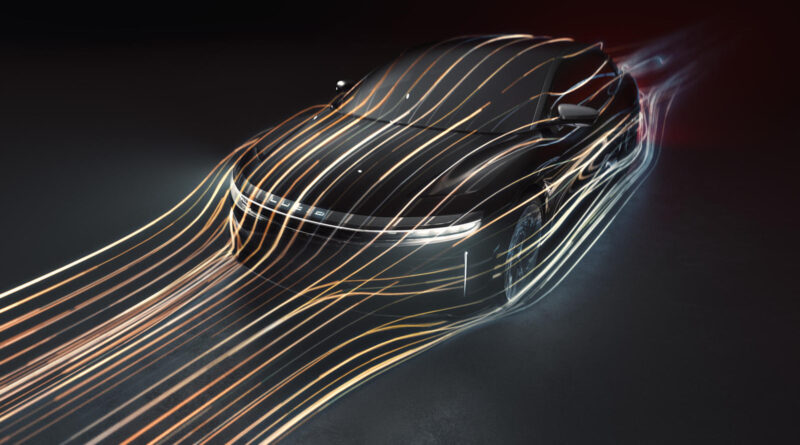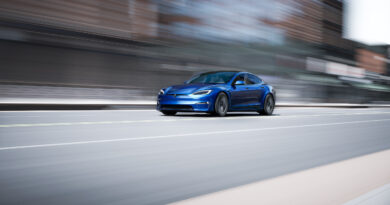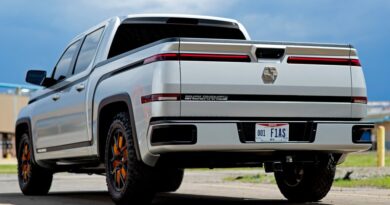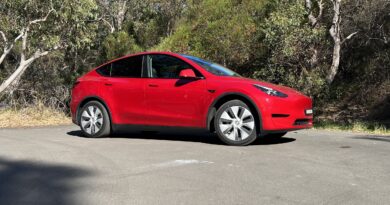Sleek Lucid Air trumps Tesla Model S
Weeks ahead of the global launch of the Air luxury sedan, the American electric vehicle start-up Lucid is making big claims for the Tesla Model S fighter.
After recent wind tunnel testing it is claiming a standard-setting 0.21 coefficient of drag for the Air. The Model S claims a Cd of 0.24.
Perhaps more extraordinary for a sizable and undoubtedly heavy electric car, Lucid is claiming a GPS-confirmed 378km/h top speed in track testing with the speed limiter disabled.
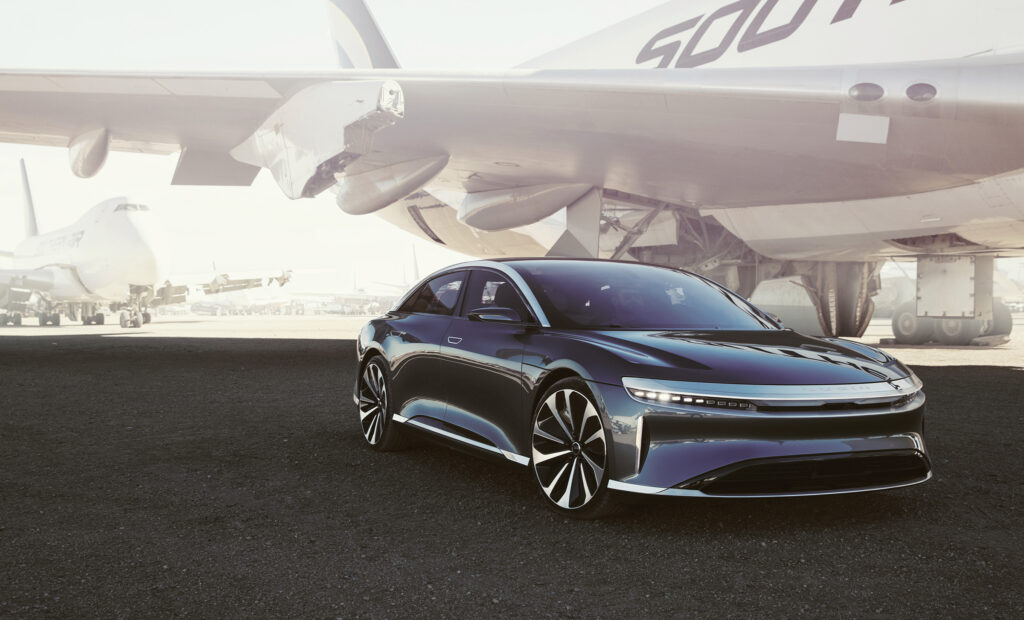
And just to throw another positive into the mix, Lucid is claiming a range of more than 640km in public road testing, a figure recently verified for the Model S.
Lucid has also promised the Air will undercut the Model S on price.
The Air is due to be unveiled in production form on September 9 before manufacturing begins at Lucid’s plant in Arizona.
First shown as a concept in late 2016, the Air is a four-door sedan that will reportedly come in a choice of rear- or all-wheel drive, topping out at a 643kW dual-motor AWD with charge provided by a 130kWh lithium-ion battery pack.
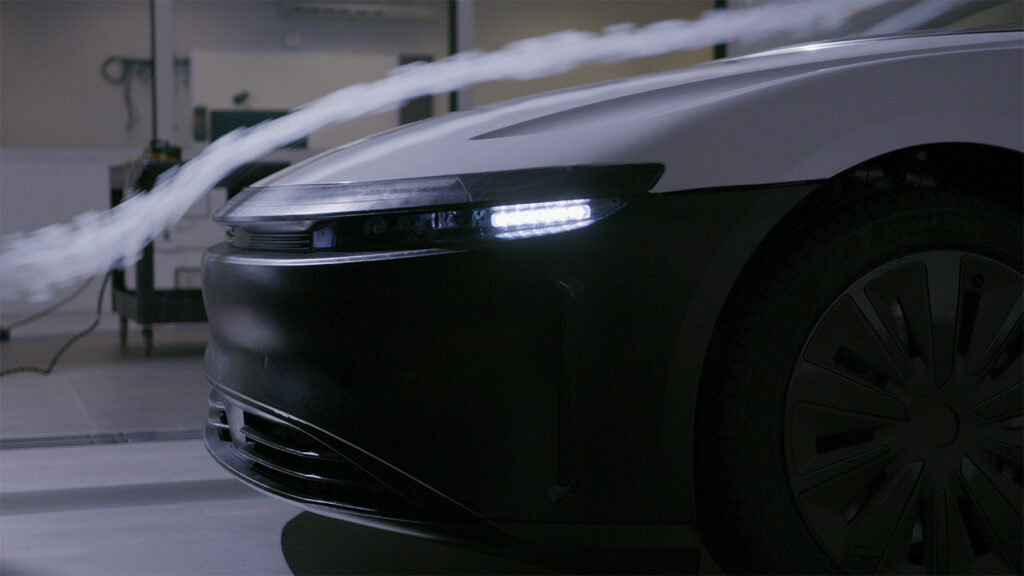
While potential North American customers can now reserve an Air, Australian prospects remain an unknown.
Lucid achieved its slick aero number at the Windshear rolling road wind tunnel in North Carolina.

“We intensively focused upon aerodynamics throughout the Lucid Air’s development.” said Peter Rawlinson, CEO and CTO of Lucid Motors and original chief engineer of the Model S.
“Our aero team worked seamlessly with design and engineering counterparts, establishing aero efficiency as a core tenet of Lucid Air from its very inception, enabling us to achieve this new standard.”
Key Air aero tweaks include side air intakes in the front fascia that smooth airflow around the wheel wells, aerodynamically optimised wheel designs, and vents in the hood that channel air around the flanks of the car.

Beneath the skin is a proprietary and patented vortex-generating air intake system behind the front bumper that maximises cooling performance by uniformly distributing air on heat exchange surfaces while minimizing the size of the air intake aperture.
A smooth under-surface and shape of the battery pack also contributes to aero efficiency.
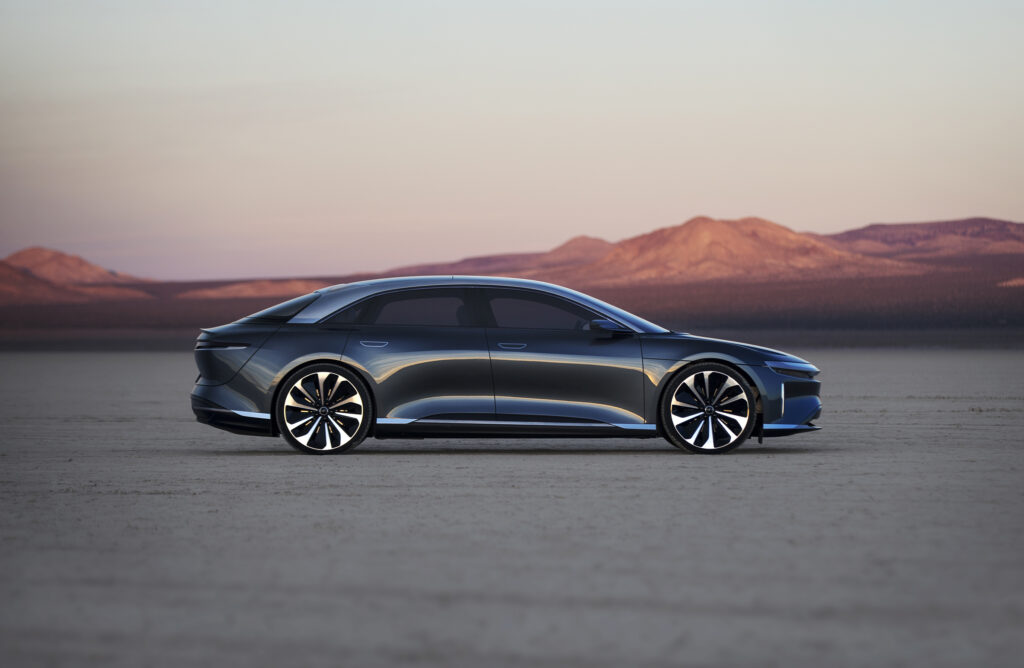
Lucid says the Air’s aerodynamics contribute to both its range and high top speed. The former was achieved with the latest Beta prototype and the former with Alpha versions.
“Range and performance are usually perceived as mutually exclusive, but a focus upon key efficiency determinants such as aerodynamics can truly benefit both,” said Rawlinson.

